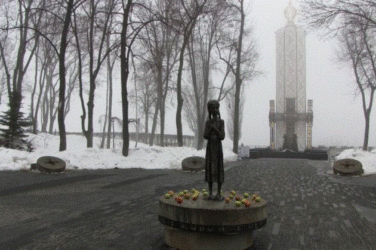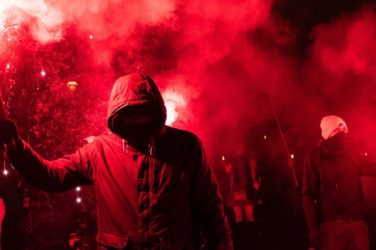In the opening paragraph of his magisterial “Bloodlands”, which demonstrates that a very high percentage of all people killed in Europe during the 1939-1945 conflicts died in what are present day Poland and Ukraine, Timothy Snyder spells out the exact numbers killed in concentration camps. He does not settle for round figures. Totals given end in a precise integer, not just a zero. This is because, as Snyder stresses, every single human life is unique, every single life counts in a way that cannot be, and should not be, subsumed in a broad aggregate, easy to remember and readily quotable.
There is much more to the quest to know exactly how many were murdered than the fundamental obligation to honor every human life. Each individual story can represent strivings and ideals which go way beyond the personal. Yet that story can, on occasion, be the image, the crystallization, in which so many others recognize themselves. Such an occasion is now. The murder of George Floyd in Minneapolis has aroused passions and generated reactions that dwarf commentaries on the 100,000 plus (and still rising) Americans who have died during the COVID 19 pandemic. That a significant share of that huge number has been made up of people who no doubt would have identified themselves with George Floyd, and whose deaths themselves reflect, at least in part, some of the conditions against which the Floyd protests are directed, is likewise important, though the connection has yet to be sufficiently underlined.
A commonplace observation about human behavior is that people usually respond far more to the specific than the general. When the event is a murder, carried out in a public place with plenty of onlookers seemingly unwilling, or powerless, to stop the killing, and when these ghastly scenes are filmed, the response process occurs almost simultaneously and on a massive scale. The suffocation experienced by George Floyd was, by the cruelest of ironies, not dissimilar to the suffocation caused by COVID 19. Survivors of this pandemic have been uniform in describing the desperate “fighting for air” which characterizes the effects of the virus. It was precisely to combat that choking which provoked the frenetic global scramble for ventilators and thereby stoked the already burning fires of economic protectionism. Physically and metaphorically, for the individual and the multitude, it is breathing space, the fundamental of life, which has been fatally squeezed.
A commonplace observation in politics is “while there’s death, there’s hope”. That verbal quintet can mean many things, depending on where you are and what power you have. For the current occupant of the White House, it illuminates every corner of the standard quick business tool, SWOT, for assessing a situation. The chance to switch attention away from the 100,000 to the one is an opportunity. It allows Mr Trump to demonstrate what he considers to be one (of his no doubt infinite list) of strengths, namely the insistence on law and order. But, since there’s no yin without the yang, the situation contains a threat, namely it might just give Mr Biden more heft with black voters. And there is also a risk, that can play to a weakness, namely that if the hand is overplayed, for instance through excessive pseudo-religiosity, or steps that upset the military, or actions suggesting that the sacred (to some of Trump’s followers) Constitution might be ignored – then subsequent actions could alienate influential bits of his electoral support. So how is the occupant of the White House going to SWOT?
First indications are that he will follow a tried and trusted route, the twitter avalanche. Like nature’s avalanches, it is designed to sweep all before it, bury many bodies, and take a while to clean up. Opening up with the claim that he has done more than any President since Abraham Lincoln to improve the situation of black people is a powerful start. True to the tradition running from Julius Caesar’s outstanding blog “De Belli Gallici”, through the civilizing mission of the Spanish in Latin America, on to the liberating order installed by English “free trade”, and down to more recent classics of the genre perpetrated by maestros such as Goebbels and Stalin, Mr Trump has grasped the crucial role of the colossal lie. Tell people the exact opposite of what you are doing. All of our distinguished forebears mentioned above hammered home (usually literally) that they were providing freedom to those they were oppressing. You might be strangled, but we are your oxygen. The colossal lie at one stroke mobilizes the true believers and so confuses the rest that they generally fail to act coherently. The one thing that is predictable in the coming period is that there will be constant switching of themes, relentless production of unlikely (and/or downright false) assertions – everything to keep changing the target. If the opposition is spending time tackling yesterday’s nonsense, you have every prospect of gaining ground today.
Right now, whether with the one death or the 100,000, the terrible truth is that everyone else is reacting to the occupant of the White House. Even Governors of States, who actually do have some legal prerogatives, are being told what to do. Everyone is seeking to behave within the law, despite the glaringly obvious usurpation of the law by the President. Influential black leaders are asking for dialogue, according to time honored processes in so-called democratic societies. There has been remarkable evolution in the way such leaders have acted. The tradition exemplified by Dr Martin Luther King is in fact very much alive and well. The problem is that others have given up on dialogue. The reason is plain to see. The others perceive that they are bound to suffer a relative loss of power in any sensible negotiated outcome resulting from social dialogue. They simply do not believe that there could be any advantages for them from such a process. So double down, stay tough, and hang on.
In Pirandello’s novel, from which the title of these comments is taken, the protagonist, Vitangelo Moscarda, is devoured by the search for “a true self”. Is he himself, or are there countless others mascarading as him? Is he one, nobody or a hundred thousand? The agonizing efforts to somehow resolve this dilemma eventually produce a period of serious illness, followed by a convalescence. In that period Moscarda is interrogated by a judge who operates within his closed circuit of existing rules, which are by now of little relevance to our hero. This brings the realization that he is better off living, as it were, outside himself.
The occupant of the White House could never be mistaken for Vitangelo Moscarda. His self- perception is strong and there are no doubts, classic features of the narcissist. That frame of course allows a very simplistic vision of the world. It’s a binary vision – yes/no, good/bad/, right/wrong, black/white. And that’s the vision sold to followers, with the subtext that the ruler rarely, if ever, makes mistakes (and certainly never admits to them). Most politicians exhibit significant elements of the same identikit. The architectures of democratic systems are meant to constrain the viral strain of the narcissist. There are so many architectures, and they have so many defects, that it is scarcely surprising that the viruses from time to time run riot. After all, as COVID 19 findings have conclusively demonstrated, the virus does the most damage when the bodies are already suffering from several ailments. Most of these democratic architectures have been constructed bit by bit, with piecemeal repairs and odd bouts of maintenance. None has been built from the ground up in conformity with what might be regarded as contemporary norms. The patchwork frame is especially evident in the Anglo-Saxon world, for long labelled with a thoroughly undeserved mark of excellence. In the US case there has not even been piecemeal repair – for decades constant undermining of the foundations has been the aim, and has been successful.
At this moment it seems that a state of “perfect storm” has been more or less reached. Just as at the end of the first decade of this century there was a coincidence of the financial crash, a precipitous rise in prices of primary products, and acute signs of political disruption, so today’s picture is one where the disregard for public health, and the disregard for social and political health, conflate with a disregard for democracy, again with the USA at the vortex of the storm. Ten years ago the pressures from the existing powers, public and private, suffocated the movements for serious change. In the intervening decade newer forces, especially in the media and informatics, have transformed the battle grounds. What will be the outcomes this time?
Peter O’Brien, Brussels, 3 June, 2020





